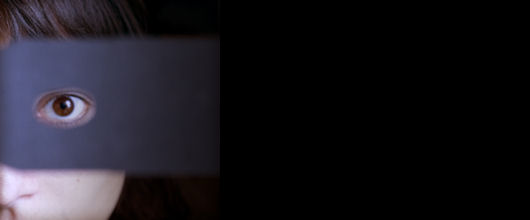The eye has it

Researchers at the University of St Andrews have found that, contrary to popular belief, it is possible to see in 3D with just one eye.
Dr Dhanraj Vishwanath, a psychologist at the University says that it is possible to experience vivid 3D vision simply by looking through a small hole.
The research, published by Psychological Science, has implications for people who have just one eye or difficulties with double-eye vision.
The study also has wide implications for 3D technology, because it suggests that there are other (possibly cheaper) methods by which the 3D experience can be created.
Current thinking is that the two visual images (one from each eye), when combined in the visual cortex of the brain, produce our sense of depth that produces the ‘special’ 3D effect.
The St Andrews study suggests that, in fact, both eyes are not necessary for this ‘3D experience’.
Dr Vishwanath said, “We have demonstrated experimentally, for the first time, that the same ‘special way’ in which depth is experienced in 3D movies can also be experienced by looking at a normal picture with one eye viewing through a small aperture (circular hole).”
“While this effect has been known for a long time, it is usually dismissed. Now we have shown that it is in fact real, and the perceptual results are exactly like stereoscopic 3D, the kind seen in 3D movies. Based on this finding, we have provided a new hypothesis of what the actual cause of the 3D experience might be.”
Since the invention of the stereoscope (the technology behind 3D movies) in 1838, the conventional assumption is that this added feeling of depth can only occur when the real world or a 3D stereoscopic image is viewed with 2 eyes.
Dr Vishwanath explained, “Most people understand what 3D is – for example, when watching a 3D movie with special goggles, objects appear more vividly three-dimensional, they seem real, and they look like you could reach out and touch them. There is also a sense of real space. This is also the way depth, space and 3D objects are experienced when the real world is viewed with two eyes by people who have ‘normal’ binocular (2 eye) vision.”
The St Andrews’ findings suggest that in fact “seeing in 3D” is not something that can only be experienced by people with two fully working eyes. Instead, the researchers say that in principle it is possible for those with only one eye, or have problems with their 2-eye vision to experience the ‘compelling’ effect.
Dr Vishwanath continued, “Many of these people don’t know what it means ‘to see in 3D’ because they have never experienced it. Our findings and preliminary results suggest that our method could be used to allow people with misaligned eyes (strabismics) to experience what it is like to actually see in 3D.”
Dr Vishwanath and his colleagues are now testing the method with a large group of strabismics. Nearly 15% of the population, including Hollywood actor Johnny Depp (who is unable to see his own movies in 3D), may have some form of misalignment.
Dr Vishwanath added, “This work has significant implications for people who don’t have normal binocular vision: First it could help them experience what it means to see in 3D. Second, it could encourage them to seek therapy to try to regain 2-eye 3D vision (which produces the strongest 3D effect in everyday life) once they can see first-hand what ‘seeing in 3D’ is really like. “
The study also has wide implications for industry – based on his theory, Dr Vishwanath suggests that the real 3D experience can be induced simply by increasing the resolution (for example using ultra-high definition (4K) TVs). Such methods could also help avoid some of the problems associated with stereoscopic 3D such as fatigue, nausea and headaches.
Later this year, Dr Vishwanath will publish more research outlining the difference between seeing a normal picture in 3D and that experienced in 3D movies.
“Seeing in 3D with just one eye: Stereopsis without binocular vision” is published by Psychological Science: http://pss.sagepub.com/content/24/9/1673.full.pdf+html
Note to editors
The researcher is available for interview on 01334 462074 or email [email protected]
Category Research